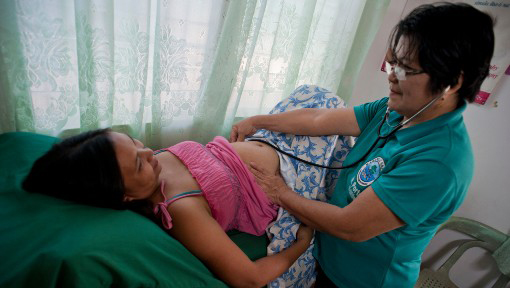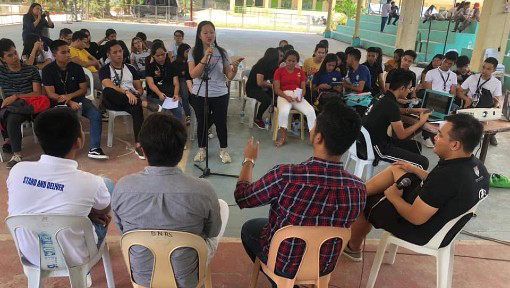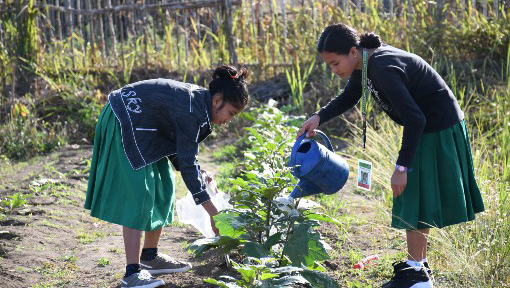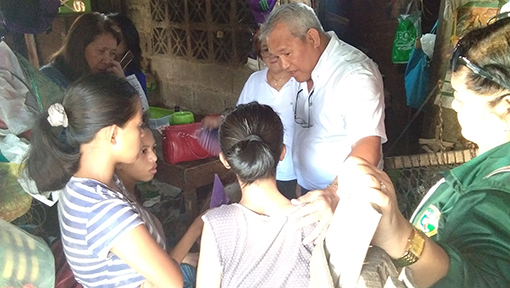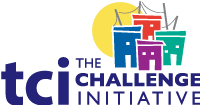Philippines Toolkit: Demand Generation
- Home
- Help and Support
- Close
- Toolkits
- Global Toolkit
- AYSRH Toolkit
- Hub Toolkits
- Core High-Impact Practices
- Gender Essentials Mini Course
- Close
- Resource Collection
- Community of Practice
- Coaching
- Log In/Register
- My Profile
- English
Community Group Engagement
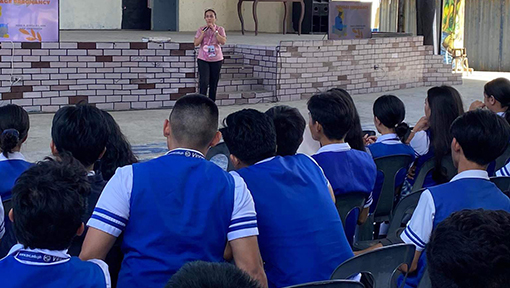 This approach involves engaging and mobilizing communities through group dialogues or education campaigns aimed at promoting healthy sexual relationships. Instead of solely targeting individuals, community group engagement focuses on working with and through community groups to influence behaviors and social norms. The goal is to achieve broad engagement and gain insights into sexual and reproductive health from the perspective of the community.
This approach involves engaging and mobilizing communities through group dialogues or education campaigns aimed at promoting healthy sexual relationships. Instead of solely targeting individuals, community group engagement focuses on working with and through community groups to influence behaviors and social norms. The goal is to achieve broad engagement and gain insights into sexual and reproductive health from the perspective of the community.
For The Challenge Initiative (TCI) Philippines, the main objective of communications is to expedite the reduction of teenage pregnancies by developing adolescent-friendly cities and improving access to family planning programs. This can be achieved by striving for the following:
- Encouraging women of reproductive age and sexually-active adolescents (along with their partners) to understand and embrace the principles of responsible parenthood. This involves voluntarily availing themselves of modern family planning methods of their choice.
- Ensuring that non-sexually active adolescents comprehend their reproductive rights and are encouraged to delay sexual debut.
- Supporting pregnant adolescents and their partners to have safe pregnancies and deliveries, prevent rapid repeat pregnancies, and facilitate their reintegration into school and society.
What are the benefits of CGE?
- Grounded Interventions: Directly engaging communities where adolescents and women of reproductive age reside ensures that our social behavioral change interventions are rooted in the realities on the ground.
- Influential Advocates: Traditional community leaders and group officers hold sway over community members. Securing their commitment as champions/advocates helps in mainstreaming our desired behaviors within the community.
- Contextual Program Implementation: Gathering public perceptions and feedback during community dialogues ensures that program implementation is contextually appropriate and effective.
- Overcoming Social Stigma: Community support can help individuals overcome the fear of social consequences associated with using family planning methods.
- Accountability and Solutions: Engaging the community can enhance the quality of family planning services by empowering them to hold the health system accountable and collaborate on solutions to address service delivery challenges.
- Improved Communication: Continuous dialogue fosters better communication between service providers and clients, leading to more effective service delivery.
CGE as a High-Impact Practice (HIP) for Universal Health Care (UHC)
The CGE HIP aims to boost the demand for FP and ASRH services among special populations by creating targeted materials and modules. These resources are designed to increase knowledge, normalize attitudes towards Reproductive Health and Family Planning (RPRH), and foster behavioral changes supportive of FP/ASRH.
To execute a successful CGE campaign, the following elements are essential:
- Comprehensive Information Resources: Develop a rich repository of information and education materials that have been vetted by experts and special interest groups. These materials should not only provide accurate information but also evoke an emotional response.
- Well-Trained Service Providers: Ensure that service providers are fully trained and equipped to deliver accurate information in a non-judgmental manner. They should possess the necessary skills to effectively communicate with target populations.
- Multi-Sectoral Strategy: Implement a comprehensive multi-sectoral strategy to disseminate information through various channels. This strategy should utilize traditional media, new media, and social media platforms to deliver messages in continuous and frequent doses. Tailor the dissemination approach to reach the general population or specific target groups effectively.
- Functional Monitoring System: Establish a robust monitoring system capable of evaluating behavior change interventions. Collect feedback from target populations and community leaders regularly. Utilize this feedback to enhance existing practices, messages, or materials and ensure that the campaign remains responsive to the needs of the community.
How to implement
Step 1: Identify issues and create urgency
- Identify common barriers that hinder community members from accessing sexual and reproductive health services. To gather this information comprehensively, conduct a review of existing data, engage in Focus Group Discussions with specific populations of interest such as adolescents, women of reproductive age, teen parents, and indigenous groups. Additionally, conduct Key Informant Interviews with service providers and technical experts from organizations like the Department of Health (DOH) and Commission on Population and Development (CPD). Deep Dives into specific case studies can also provide valuable insights. Collect the following information during these data collection activities (excerpt from Community Toolbox):
- Why do you want to communicate with the community? (What’s your purpose?)
- To whom do you want to communicate it? (Who’s your audience?)
- What do you want to communicate? (What’s your message?)
- How do you want to communicate it? (What communication channels will you use?)
- Whom should you contact, and what should you do to use those channels? (How will you distribute your message?)
- Create a sense of urgency with the leadership: Present the current issues backed by health data and social trends to key stakeholders such as the City Mayor, City Council, SK Federation, and Liga ng mga Barangay. Relate these issues to the local context of the city. Utilize the Health Leadership and Goverance Module HII, a primary intervention by ZFF and TCI, to develop FP/ASRH champions among leaders. This module aligns FP & ASRH concerns with Universal Health Care, Bridging Leadership and Systems Thinking principles, fostering a sense of co-ownership and co-creation in finding solutions.
Tip: High-level leaders and middle managers often analyze issues programmatically and population-wise. Address these perspectives by emphasizing:
-
- Public perception: Is there widespread concern or support for the issue?
- Legal mandates: Are there national laws requiring action?
- Public health impact: How does addressing the issue affect the well-being and productivity of the populace?
- Economic considerations: What are the costs and benefits of addressing the problem?
- Engage with local community gatekeepers and facilitate community-led dialogue: Foster collaboration between LGU and Barangay leadership to ensure alignment and shared objectives. Conducting a community deep dive can be an effective approach to cultivate ownership among local leaders. This involves immersing participants in a leadership learning journey where they directly experience the challenges faced by various stakeholders within the community. Through interactive and participatory dialogues, participants can freely exchange opinions, experiences, views, and values. These insights can help in understanding the beliefs, attitudes, and experiences of community members regarding FP and ASRH.
- Establish a core group to develop the Communications Strategy: Form a dedicated team, comprising representatives from the City Leadership Team, RPRH Implementation Team, or other relevant bodies. This group should include stakeholders from local leadership, health, social welfare, information office, youth (SK Federation), and other target groups. Their collaboration will ensure the development of a comprehensive Communications Strategy aligned with the goals and priorities of the community.
Step 2: Create a communications strategy
- Create a Communications Plan. Using the gathered data on Feelings, Thinking and Behavior by the target population, formulate the following:
- Desired action that the team wants the target population to display that can solve the problem (Behavioral Objective)
- Corresponding action of information provider to communicate information (Communications Objective)
- Create a Single Overarching Communications Outcome (SOCO) – the core message that must be imparted to the target audience.
- Based on the SOCO, create at least 2-3 Key Messages. Key messages are designed with the goal of inciting the interested population to practice a desired behavior. A good message is both accurate (vetted by 1-2 studies/data) and understandable (framed in a manner as if directly speaking to the target audience).
The FP and ASRH Programs already have established Communications Plans and Key Messages devised by the DOH. LGUs can adopt and improve upon these existing plans to better suit their local context and address the specific needs of their communities.
See box below Steps for Communications plans for Family Planning and Adolescent Health and Development.
Step 3: Develop the communications materials through behavior-centered design
- Convene the CLT and design a behavior-centered design for IEC. Develop a hypothesis about what is motivating the Behaviors of the target audience.
- Using data regarding the community’s knowledge, attitudes and behavior added with the Communications Plan, identify one or more key messages which will serve as the core for the communications material.
Tip: An effective information campaign is able to induce behavior change by manipulating the various critical levers of behavior change
| INFORMATION |
|
| EMOTIONAL APPEAL |
|
| RULES AND REGULATIONS |
For FP & ASRH, these are anchored under the principles of the Responsible Parenthood and Reproductive Health Law. Identify other national and local policies that give further support to these. |
| CHOICE ARCHITECTURE
● Redefine the context in which choices are made by emphasizing the preferred option without necessarily eliminating the contrary choice. ○ Direct attention– make the desired behavior the default or more prominent option. ○ Simplify decision-making by providing key information and making the steps towards choosing the desired behavior more understandable. ○ Induce habit formation by providing alerts, prompts and reminders. ○ Use commitments to encourage clients to maintain their newly-adopted behavior. ● Use choice architecture in a way that supports people’s goals as much as possible. People are very sensitive to manipulation and may respond poorly to feeling that someone is trying to control their actions. ● In the spirit of Informed Choice and Voluntarism, this respects the choice of the client while still championing the choice for modern, safe methods of contraception by making this choice “easier” and “more obvious” to make without necessarily eliminating the opposing choice. |
| INCENTIVES
● Incentives address the real or perceived costs (time, money, effort, opportunity) that the client audience is apprehensive about. ● Make the desired behavior more convenient to continue by providing rewards or removing barriers. ● Make the undesired behavior harder to continue by emphasizing friction points and barriers or, in cases where it is applicable, penalizing behavior. |
| SOCIAL INFLUENCE
● Collective Filipino society operates on a set of mores, social rules and perceptions. Leverage this by mainstreaming the desired behavior to make this the perceived norm. ● Identify FP/ASRH champions who can embody the desired behavior and spouse the message. ● Appeal to collectivist tendencies ○ Share that the desired behavior is currently being done, in fact probably normal and expected, by other people. ○ Facilitate peer exchanges where others can observe and gain support for the desired behavior. ○ Create a conversion about shared beliefs and expectations. ○ Promote success stories. |
Step 4: Capacitate the service providers and create a prototype
- Using the resources available, identify a pilot site where the prototype campaign can be tested. The pilot site must be sufficiently small to be able to control any extraneous variables while still being large enough that the data obtained can be extrapolated to a larger audience. Test your prototype and make revisions accordingly.
- Capacitate the service providers in delivering the messages. Orient the providers on the Communications plan, key messages, the IEC design, behavior design levers and nuances of delivery. Create talking points or teaching guides which the service providers can study in order to standardize the message and avoid unnecessary adlibs.
Specific training modules/workshops are available that can capacitate service providers, equip them with the proper knowledge and boost their confidence.
For healthcare workers:
- Family Planning Competency-based Training Module 1– has specific talking points to capacitate providers to conduct counseling
- Foundational Course on Adolescent Health Care for Primary Service Providers
- Sexually Healthy and Personally Empowered-Adolescent (SHAPE-A)– improve CHV’s ability to communicate with adolescents and practice non-judgmental conversation. SHAPE-A can also be taught to peer educators
- Adolescent Health Education and Practical Training (ADEPT) – improve the CHV’s ability to communicate with adolescents, improve the capacity to conduct HEEADSSS screening
- Healthy Young Ones User Guide for Primary Healthcare Providers
For CHVs and non-health workers
- Sexually Healthy and Personally Empowered-Adolescent (SHAPE-A)
- CHW Job Tasking – enhance their FP delivery skills
- Peer educator’s training – for peer educators and navigators
- Once the IEC campaign has been delivered repeatedly with minimal revisions and the service providers are drilled sufficiently enough, it is now ready for scale up.
Tip: Adult learners respond more to interactive activity designs that allow them to realize new knowledge and recontextualize information based on their life experiences. Dialogues are more effective when done in the language of the participants.
Step 5: Deliver the message
For the Family Planning program as a whole, the primary method for targeted demand generation is through the Usapan Series. This is a collection of different modules designed for specific populations to address their need for information, encourage them to support responsible parenthood, and allow them to exercise their informed choice in selecting their preferred FP commodity.
Tip: Fostering discussions between couples and using prompts that promote gender equality, have both increased use of contraception as well as increased gender equity (Promoting healthy couples’ communication HIP).
For Adolescent Health and Development, the iChoose: Malayo ako maging website is an excellent resource of professionally-vetted, publicly-available materials (videos, print materials, etc) for IECs designed to address adolescent-relevant themes such as mental health, reproductive health, body positivity and acceptance.
Step 6: Monitor and track the progress
- Conduct post-event evaluation. Measure the immediate emotional/satisfaction response (Level 1) of participants through Likert scales or Client satisfaction surveys. Measure the level of knowledge/information retention (Level 2) by conducting a pre- and post-test. The initial goal following an activity is to be able to establish positive attitudes towards RPRH by increasing information and diminishing myths and misconceptions.
- Coordinate the event with the nearest service provider (if in-reach) or service delivery point (if outreach). Provide the SDP with a list of attendees and their expressed preferred commodities so they can anticipate interested clients after the event. Likewise, during the event, provide directories or brochures to participants containing contact information and instructions to the nearest SDP that can provide their preferred FP service.
Tip: In some communities, handing out IEC materials with vouchers for services redeemable at the health center provides indirect, non-monetary, non-coercive incentive to interested clients. After an IEC, there will be some late adopters who might warm to the idea of RPRH days after the event. Providing these vouchers provides them with a chance to try out/inquire more on the commodity of interest in a separate visit at the health center. - Measure long-term response to the IEC campaign by monitoring the number of clients that have consulted in the SDP and/or availed of FP method of choice from service providers. These can be measured by correlating the attendance of participants to IEC with the HMIS record of the SDP or through house-to-house surveys of BHW/CHVs.
- Measure the systemic efficacy of the information campaigns and outreaches using a Quality implementation Checklist for CGE.
link to MOS HII
Youth Engagement Approaches
Challenges
- Due to the inherent nature of the topic, FP & SRH have numerous misconceptions and myths muddling the information space. Worse, even service providers & teachers themselves, harbor misinformed beliefs or unaddressed biases. It is important to address these first through dialogues & lectures with your training team early on.
- Creating too large a tent too early on in the coalition may prove detrimental especially if some members with very strongly negative views against SRH, are included immediately. While their input are very essential, it may be more prudent to start with a smaller task force of similarly-aligned partners, build an initial strategy, then invite other members to provide objective criticism.
- Social norms can inhibit an individual’s ability to act on their reproductive intentions. Social norms can overpower an individual’s preferences. In Kenya researchers found that men’s and women’s contraceptive use was influenced more by their perception of their social network’s approval of family planning than by their own approval of family planning (Dynes et al.).
External Resources
- The Flower of Participation
- La Chance Board Game
- ReachHealth’s research reports
- ReachHealth’s FP booklets for couples
- ReachHealth’s FP booklets for young adults
Philippines Program Areas
Communications Plan for Family Planning
(Source: Omnibus Guidelines for Adults, Family Planning Competency-based Manual 1)
Guiding Principles of PFPP:
- Respect for the sanctity of life. Family Planning aims to prevent abortion and therefore can save the lives of both women and children.
- Respect for human rights. Family Planning services will be made available using only medically and legally permissible methods appropriate to the health status of the client. Family Planning services shall be provided regardless of the client’s sex, number of children, sexual orientation, moral background, occupation, socio-economic status, cultural, and religious belief.
- The freedom of choice and voluntary decision. Couples and individuals will make family planning decisions based on informed choice including their own moral, cultural or religious beliefs.
- Respect for the rights of clients to determine their desired family size. Couples and individuals have the basic right to decide freely and responsibly the number and spacing of their children.
- Central to the attainment of optimum maternal and child health is proper birth spacing of at least three years. This period provides ample time for mothers to regain their health and to properly care for their newborn. Through the use of safe and effective FP methods, the risks of pregnancy among the “too young,” “too old,” “too frequent,” and “too many” can be avoided.
- Pregnant women may have unmet need for FP. These women will benefit from being informed of FP services available in their localities.
- Breastfeeding mothers have specific FP needs. To this end, there are methods that do not affect the quality and quantity of breast milk.
Prevention and Management of RTIs, including STIs, HIV/AIDS
- Individuals who are sexually active with unmet FP needs are at risk for sexually transmitted infections like HIV/AIDS.
- Family planning clients who are at risk of contacting STIs need dual protection through the use of a FP method such as the condom, which provides protection against STIs.
- Risk assessment for STIs is part of determining a client’s eligibility for IUD use.
Prevention and Management of Abortion and Its Complications
- Abortions are a result of unplanned pregnancies. One of the major causes of maternal deaths is due to the complications of unsafe abortion. Women who resort to abortion have unmet needs for family planning.
- Family planning provides men and women with options for preventing unplanned pregnancies, which may result in abortion. Proper management of complications of abortion includes medical treatment and the provision of FP services (i.e.,counseling).
Prevention and Management of Breast and Reproductive Tract Cancers and Other Gynecological Conditions
- Provision of FP services presents an opportunity for screening and early detection of breast and reproductive tract cancers.
- Combined oral contraceptives are proven to reduce the risk of ovarian and endometrial cancers. Progestin-only contraceptives have a high protective effect against endometrial cancers.
Education and Counseling on Sexuality and Sexual Health
- An understanding of basic concepts on fertility deepens the appreciation of gender roles and enhances the relationship between sexual partners.
- Fertility management and sexuality education are essential to sexual health.
- Family planning counseling and provision of accurate information on sexuality helps reduce unplanned pregnancies.
Men’s Reproductive Health and Involvement
- Men are crucial halves in the attainment of a couple’s reproductive intentions and should be involved in family planning.
- Male involvement is critical to acceptance and continuous use of family planning methods. This can be in the form of
- supporting their partner’s use of FP
- being acceptors themselves
- performing family obligations and other shared responsibilities such as child rearing
- Men have their own specific health needs for FP that a comprehensive RH service should provide for.
Adolescent Reproductive Health
- Adolescents have the potential to be sexually active and need to be advised and counseled about safe and responsible sexual practices, including FP.
- Orientation on fertility awareness and counseling are basic services, which will help promote responsible sexuality among adolescents. Responsible sexuality will help reduce unplanned pregnancies and RTIs particularly sexually transmitted infections like HIV/AIDS.
Prevention and Management of Infertility and Sexual Dysfunctions
- Fertility awareness during FP counseling may provide the opportunity to discuss infertility and sexual dysfunction problems, which are normally difficult topics to bring out in the open.
- FP is not only for delaying pregnancies but also for achieving fertility through fertility awareness orientation, counseling, and referral to appropriate facilities.
Violence Against Women and Children
- FP use may be a sensitive issue in a family affected by a gender-related violence (e.g. women who are beaten up because they do not want to get pregnant). Health providers need to be tactful while ensuring that client needs are met.
- Domestic violence, mostly with women as the victims, is now recognized as an important public health issue. Sexual violence is one of the most common forms. This provides an opportunity to discuss and promote FP.
- Using an effective FP method reduces maternal deaths by preventing high risk pregnancies among women who are too young, too old, or too ill to bear children safely.
- Maternal deaths can be prevented if unwanted pregnancies are avoided and pregnancies are spaced by at least three years.
- FP prevents closely spaced pregnancies that leads to and worsen conditions such as anemia and maternal malnutrition.
FP has other additional benefits aside from contraception
- Studies show that combined oral contraceptives provide significant non-contraceptive health benefits. They are known to prevent/reduce the incidence of the following diseases and conditions:
- Ectopic pregnancy
- Ovarian cancer
- Endometrial cancer
- Ovarian cysts
- Benign breast disease
- Excessive menstrual bleeding and associated anemia
- Menstrual cramping, pain, and discomfort
All FP methods help women with HIV to avoid pregnancy, thus avoid bearing HIV-infected children
- Globally, an estimated 14.5 million infants and children under age five die every year, mainly from respiratory and diarrheal diseases complicated by malnutrition.
- Recent studies indicate that the lowest risks for fetal death, pre-term delivery, being undersized for gestational age, neonatal death, and low birth weight occur when births are spaced from three to five years.
- Properly spaced children of at least three years will be given the love, attention, care, and time from mothers and fathers attending to their growth and development.
- Fewer children in the family will provide more opportunities for adequate food, clothing, good education, and good health for the children.
- Breastfeeding can protect infants against diarrheal and other infectious diseases and also protects mothers from postpartum hemorrhage.
- Spacing Provides fathers who are suffering from chronic illnesses (i.e., Diabetes, Hypertension) enough time for treatment and recovery from those illnesses.
- Lightens his burdens and responsibilities in supporting his family since he will only be providing few children he can afford to support.
- Enables him to give his children a good home, good education, and a better future.
- Gives time for his own personal achievement.
- Enables him to have time and opportunity to relate with his wife and play with his children.
- Affords him extra resources and enough time to actively participate in community programs and projects.
Communications Plan for Adolescent Health and Development
(Source: KADA Playbook)
GOALS:
- Encourage community frontliners to communicate effectively with adolescents on sexual and reproductive health
- Equip community frontliners with the knowledge and skills to feel confident about the information they share to adolescents on sexual and reproductive health
- Promote positive attitude and behaviors in discussing adolescent sexual and reproductive health topics with adolescents and their communities
Indicators for success
Vertical Indicators
- Inclusion of CGE into the Program Design
- Inclusion of CGE in the Work & Financial Plan, Annual Operational Plan, Annual Investment Plan
- Adoption of CGE standards as per DOH Guidelines on ensuring quality standards in the delivery of Family Planning program and services through compliance to Informed Choice and Voluntarism
- # of of community dialogue days/Usapan Sessions conducted
What is the evidence that CGE strengthens family planning programming?
- Targeted door-to-door demand generation activities in Niger conducted by Community health workers utilizing reflective dialogues to discuss family planning and timing and spacing of pregnancies (Challa et al., 2019). The advantage of reflective dialogue over traditional health classes is it eliminates the dynamics of top down lecture in favor of conversational learning.
- Most couples respond better to adult-centered learning designs (Knowles, 1984). Utilizing education methods that validate the adult’s lived experiences & provide more leeway for the client to “discover” his/her own need drastically increases the chance of retention of information and subsequent behavior change afterwards.
TCI APP USERS PLEASE NOTE
You will only receive CERTIFICATES by email – when earning a score above 80% – and will not be able to view or print a certificate PDF from the TCI app.
Test Your Knowledge
Earn a Certificate
Quiz Summary
0 of 5 Questions completed
Questions:
Information
You have already completed the quiz before. Hence you can not start it again.
Quiz is loading…
You must sign in or sign up to start the quiz.
You must first complete the following:
Results
Results
0 of 5 Questions answered correctly
Your time:
Time has elapsed
You have reached 0 of 0 point(s), (0)
Earned Point(s): 0 of 0, (0)
0 Essay(s) Pending (Possible Point(s): 0)
Categories
- Not categorized 0%
- 1
- 2
- 3
- 4
- 5
- Current
- Review
- Answered
- Correct
- Incorrect
-
Question 1 of 5
1. Question
Peers are an influential source for youth, 60% of Filipino youth would prefer to learn about sex and reproduction from friends of the same sex over a medical professional.
CorrectIncorrect -
Question 2 of 5
2. Question
One challenge to youth engagement is the turnover as they age out of programs. One way to plan for this is:
CorrectIncorrect -
Question 3 of 5
3. Question
An orientation of youth influencers includes training on:
CorrectIncorrect -
Question 4 of 5
4. Question
How useful did you find the information and/or tools presented on this page? Please write your response in the box below using one of the following phrases: Very useful, Useful, Somewhat useful, Not useful.
Feel free to comment on why you made that choice.
-
This response will be awarded full points automatically, but it can be reviewed and adjusted after submission.
Grading can be reviewed and adjusted.Grading can be reviewed and adjusted. -
-
Question 5 of 5
5. Question
How do you intend to use the information reviewed and/or tools that you accessed?
-
This response will be awarded full points automatically, but it can be reviewed and adjusted after submission.
Grading can be reviewed and adjusted.Grading can be reviewed and adjusted. -

